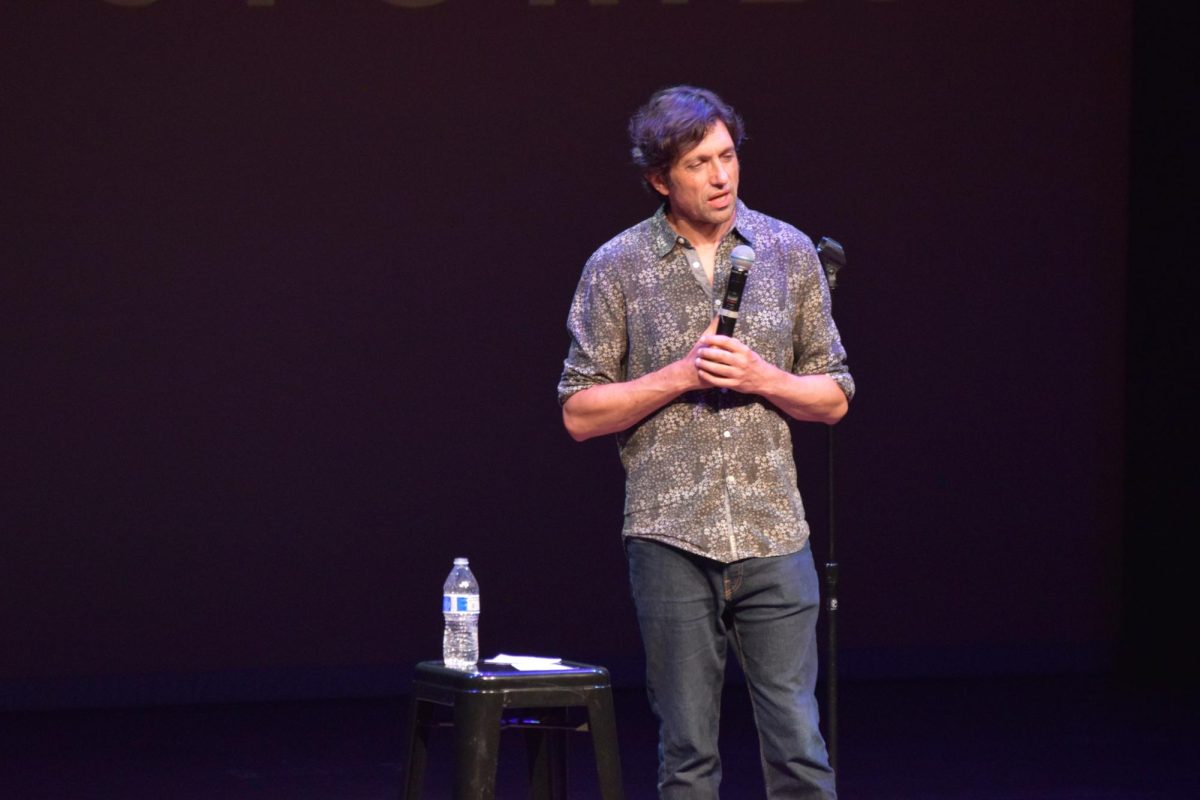City awaiting Central Plant’s efficiency tests
March 3, 2004
On Feb. 26-27, students were likely greeted with the booming noise of steam billowing out of Sacramento State’s Central Plant as they exited Parking Structure I. The Central Plant, most recognizable as the building with the giant green tank next to the tennis courts, was having its energy efficiency inspection.
– As students scurry to their classrooms, they have little or no awareness of the process that keeps their classrooms at a comfortable temperature, said Christie Patrick, administrative support assistant for the Central Plant.
-Many students might be curious about the frequent sight of steam coming out of vents in the ground. That steam comes from the Central Plant and is circulated throughout campus to heat the buildings.
-The idea is to create that steam while limiting the level of emissions resulting from burning natural gas, which is what the plant’s steam-room utilizes to produce the steam, said Paul Serafimidis, manager of engineering services at the plant.
-Facilities like Sac State’s Central Plant have been under Sacramento city government’s watchful eye concerning energy efficiency because of the excessive pollution the city copes with, Serafimidis said.
-The loud noises from the plant were from the steam-room’s boilers running at near maximum capacity. This was to demonstrate for Sacramento city inspectors that the plant is capable of controlling nitrogen oxide emissions at the city’s required level, Serafimidis said.
-“Air quality is a big issue and they’re getting really tight on it,” Serafimidis said of Sacramento regulators. “The air quality in Sacramento right now is not good.” Junior speech pathology major Carmela Tandoe said that she is very heartened at the efforts to limit emissions into the atmosphere.
-“Sacramento is a valley which means that we get the Bay Area’s pollution as well as our own,” Tandoe said.
-“With the American River there is a lot of wild life and as of right now it’s not polluted thanks to efforts like those of the Central Plant,” Tandoe said. Senior family and consumer services major Dana Jones said she wasn’t previously familiar with the plant’s purpose, but was happy to learn of its function.
-“I never knew what that tank was before, but I’m glad to see they’re doing something about global warming,” Jones said.
-The steam-room houses two large old boilers and one smaller, newer boiler, all of which produce the plant’s steam. Serafimidis said that up until a year after he joined the plant, the two older boilers rather than burning natural gas, burned oil which emitted considerably more pollution.
-Companies tried to convince the plant to completely replace the oil burning boilers, Serafimidis said. However, he said the staff knew that simply adjusting the existing boilers to burn natural gas would bring an enormous savings to the university and the taxpayers who help fund it.
-“We took the lead in air quality control,” Serafimidis said of Sac State.
-The Central Plant staff knew that the state was heading fiercely in the direction of energy efficiency, so the university got on it before formal requirements were even put in place, Serafimidis said.
-The plant will learn the results of its inspection in three weeks.
-Serafimidis said the key way the boilers conserve energy is their ability to redirect gas, which would otherwise get released as pollution, back into the boilers to get re-burned. In the natural gas burning process, some always escapes without getting burned. He said the boilers are fitted with sensors that measure how much unburned natural gas is escaping at any given time.
-The boilers have fans that then extract that natural gas from the rest of the emissions that do make it out of the building, Serafimidis said.
-Another way the plant conserves energy is that those fans don’t have to run at a constant speed. Their speed depends on how much natural gas happens to be escaping at any given moment, Serafimidis said.
-“We feel good when we can help create a more comfortable learning environment for students and faculty,” Serafimidis said.
-Dale A. Cox, a public affairs officer for the U.S. Geological Survey housed on campus, said that he is pleased with the plant’s performance.
-“We certainly appreciate the quality of service, our lights, our heat, our cooling, our ability to provide the best quality of science to the nation,” Cox said.
-“I think most students think of their heating and air services as a switch they flick on and off,” Christie Patrick said. “They don’t realize there is a whole team of technicians providing it for them.”
-“I don’t think students pay much attention to our energy efficiency efforts, but they should because it’s saving them money in operational costs,” said nursing program freshman Erica McClure.
-Serafimidis, a Sac State alumnus, said that providing his services to the campus has been a pleasure, but he does have concerns about the university’s fiscal future.
-“We’re a little worried,” Serafimidis said. “If Proposition 57 doesn’t pass, we may face deep cuts.”
-Serafimidis said he fears that sharp cuts will effect a slow regression back to the status quo that existed before the plant’s energy efficiency revolution began.
–
























































































































